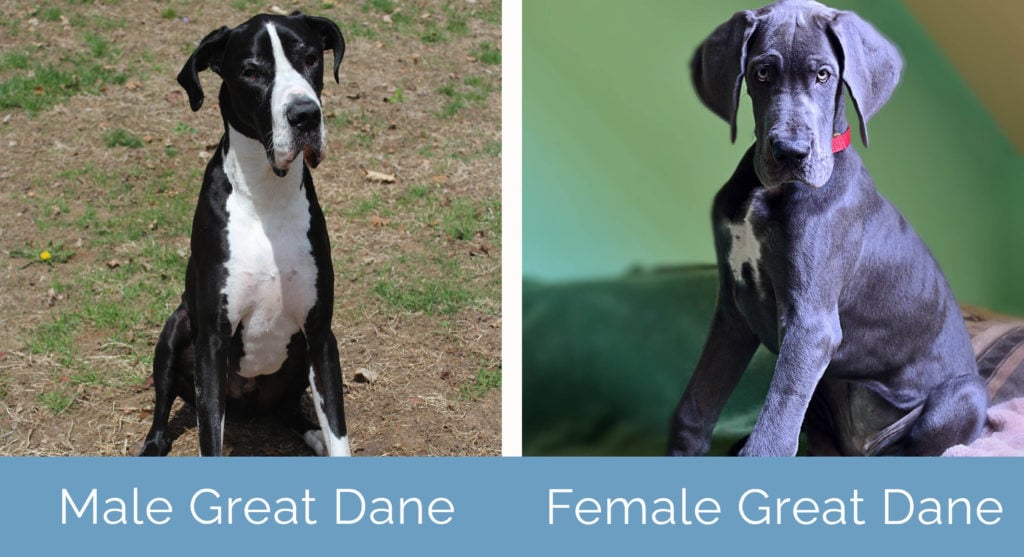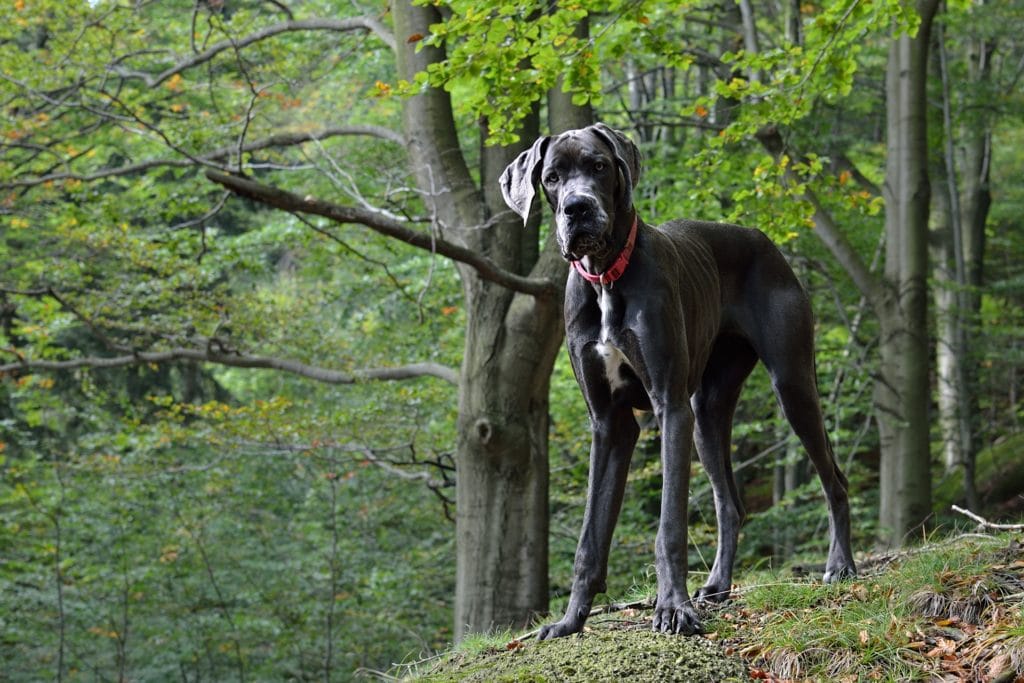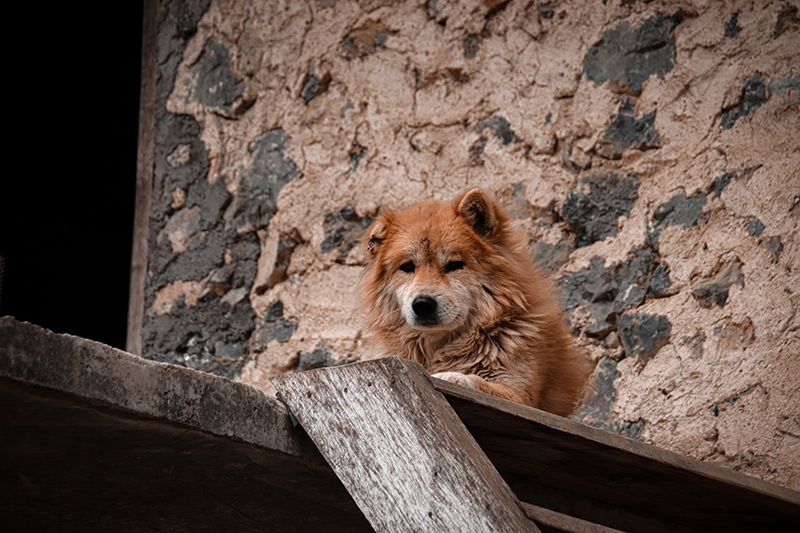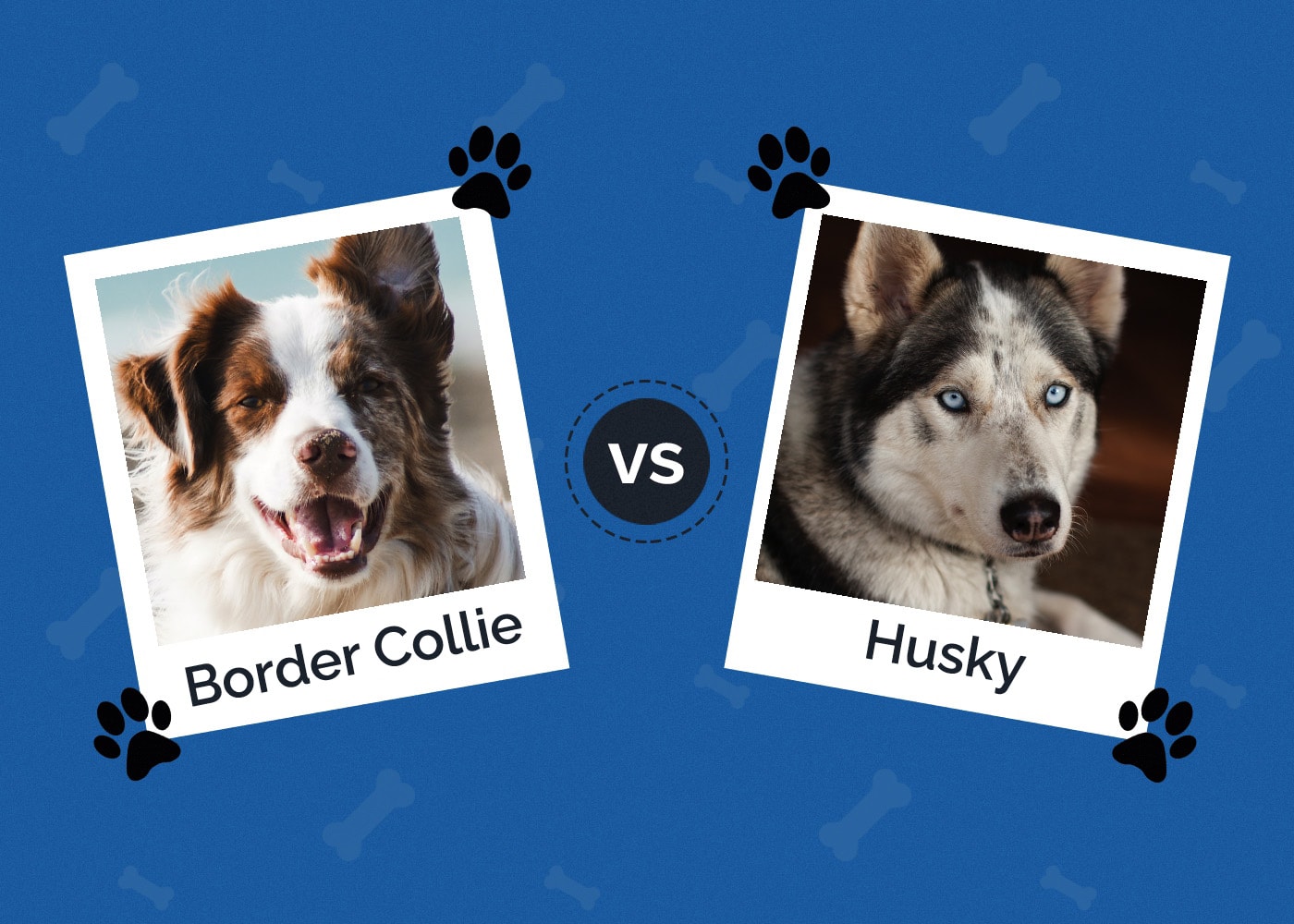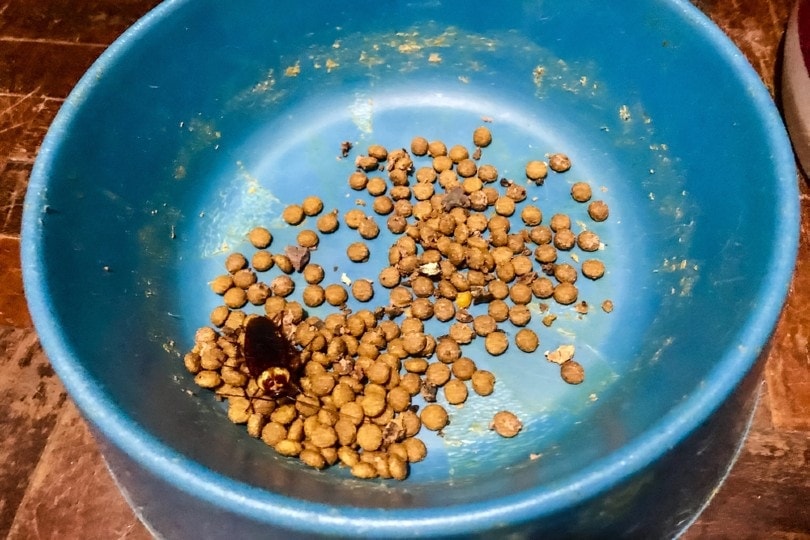Male vs Female Great Dane: How Do They Compare? (With Pictures)
Updated on

The Great Dane is known for being a loveable gentle giant with an easy-going nature. As one of the largest dog breeds on earth, one must seriously consider all that goes into caring for this impressive breed. Before you ever commit to a breed, you will be taking size, temperament, trainability, and many more characteristics into consideration.
If you’ve decided that the Great Dane 1 is the right dog for you, you still have one more decision to make before choosing a puppy – boy or girl? Okay, so you will have to choose a name afterward, but we’re here to help you break down the differences between male and female Great Danes. Truthfully, they are very similar, but there are some key areas where they differ. Let’s look.
Visual Differences
At a Glance
- Average height (adult): 30 – 32 inches
- Average weight (adult): 140 – 175 pounds
- Lifespan: 7 – 10 years
- Exercise: 1+ hours a day
- Grooming needs: Minimal
- Family-friendly: Yes
- Other pet-friendly: Often
- Trainability: Friendly, lovable, dependable, patient, goofy
- Average height (adult): 28 – 30 inches
- Average weight (adult): 110 – 140 pounds
- Lifespan: 7 – 10 years
- Exercise: 1+ hours a day
- Grooming needs: Minimal
- Family-friendly: Yes
- Other pet-friendly: Often
- Trainability: Friendly, lovable, dependable, patient
Male Great Dane Overview
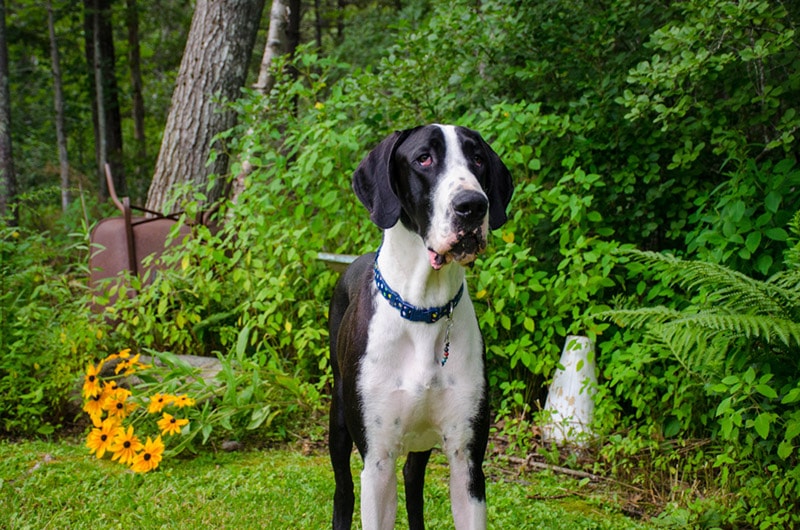
Personality / Character
Great Danes are incredible dogs that are very dependable, loyal, and loving. They are typically quite social but also have a protective nature that makes them great watchdogs. They may come off as bold and more territorial when faced with a potential threat, but his sheer size alone is usually enough to intimidate anyone.
Male Great Danes tend to be huge goofballs. You can expect them to entertain you with their goofy antics. He won’t know his size either, so look out. You’ll also want to steer clear of that massive, powerful tail because it can hurt!
You can expect your male Dane to fill up your house not just with their massive body, but with love and affection. He will more than likely consider himself a human and will take over the furniture when he’s ready to lounge. Keep things in the kitchen picked up because he won’t have any trouble getting to anything on the counter since it is either at or below eye level.
Your male Dane may or may not take well to other animals, particularly other male dogs. It is important to properly socialize him as a puppy with a variety of animals and teach him what is expected of him. Unaltered males will be prone to more behavioral issues related to being intact. It’s recommended to neuter your male when the time is right to prevent or solve any related behavioral issues.
Exercise
A male Dane should be exercised for at least 1 to 2 hours each day. They don’t have as extensive exercise requirements as some other active, energetic working breeds but they do need their daily dose of energy expenditure.
Males are typically more rambunctious than females, so he needs to release that energy through a daily walk or jog, or even some playtime in the backyard.
Training
Since the male Great Dane is such a large and powerful dog, they will need a firm leader to start training from the moment they are brought home. Reward-based, positive reinforcement training will be your key to success.
Obedience training and proper socialization are an absolute must. You will want to expose him to different people, animals, places, and situations so that he can become a balanced, well-behaved family member.
Male Great Danes are happy-go-lucky, friendly, and generally eager to please. They do mature slower than females, so it is generally concluded that they’re a bit more difficult to train. This is because that playful, distractible puppy personality takes a bit longer to subside in males. It may be hard to see them as puppies, though, since they quickly become massive.
Grooming and Care
A Great Dane’s grooming needs are minimal. That short, sleek coat does not shed too much but you will notice some hair around the house just because of the body size alone. Shedding will also intensify about twice a year with the change of seasons. Danes can do fine with a weekly brushing to remove those loose hairs.
It’s a good idea to check the ears often to make sure there is no buildup of dirt, debris, or any signs of infection. This is especially true for those that do not have their ears cropped, as those big, heavy, floppy ears can trap in some nasty stuff.
Train your male Great Dane to tolerate routine nail clipping and regular baths. These dogs are massive and can be nearly impossible to control if they are trying to escape during these activities. It’s best to get started when they are young puppies; that way, you have no problem when they weigh more than 100 pounds.
When it comes to feeding, this dog is going to eat a lot. He should be fed a premium quality diet that is appropriate for his large size, age, and how active he is regularly. As a puppy, he will need to be fed the proper puppy formula that is appropriate for the growth and development of giant breeds.
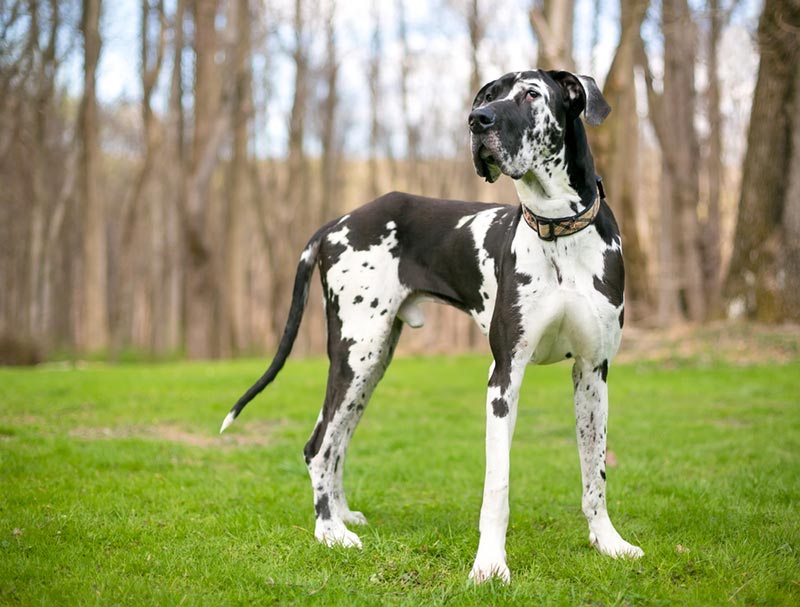
Health
Any Great Dane that is not being used for breeding purposes should be neutered at the appropriate time. Neutering has many health and behavioral benefits and will also help prevent any unwanted litters.
Males will cost less to have altered than females because the neuter is a less complex surgery than the spay. It will still be more costly than your average dog, though, because it is based on weight.
For any dog, nutrition and physical activity play a vital role in overall health and wellness. Unfortunately, Great Danes have one of the shorter lifespans among purebred dog breeds, but males and females have the same longevity of 7 to 10 years.
These massive dogs are prone to a variety of genetic health conditions related to their large size:
Suitable for:
Male Great Danes can make excellent family pets that will also double as protectors of the household. They are going to be best suited for homes with older children as their size and clumsiness can put small children at risk of being knocked down and/or injured just because of their large size.
They will be best suited for someone that has the time, space, finances, and commitment it will take to properly care for, train, and socialize this big guy.
Female Great Dane Overview
Personality / Character
Female Great Danes are typically calm, loving, and nurturing with a bit of a playful side. They make excellent additions to any family that is prepared for a dog of this size. They are typically gentler than males, especially when it comes to playing. Females also tend to be more emotionally mature than males, so they are much more in tune with the energy of the household.
Females may take on the role of the motherly protector of any children in the household. As with any large breed dog, there are risks associated with young children being knocked over or injured so as a general rule, they do best with older children.
Females aren’t nearly as clumsy as males, but during their period of rapid growth during puppyhood, you’ll still think those long legs are out of control. Like males, they will happily take over the furniture and will have easy access to countertops.
Like with most female dogs, a female Dane’s demeanor may change during the heat cycle. This personality change varies, but they may be a bit more stubborn or grumpy during this time of the year. The best way to solve this problem is by having her spayed. Some female Danes do perfectly fine with other animals, while some do not. Female-on-female conflict is the most common issue.
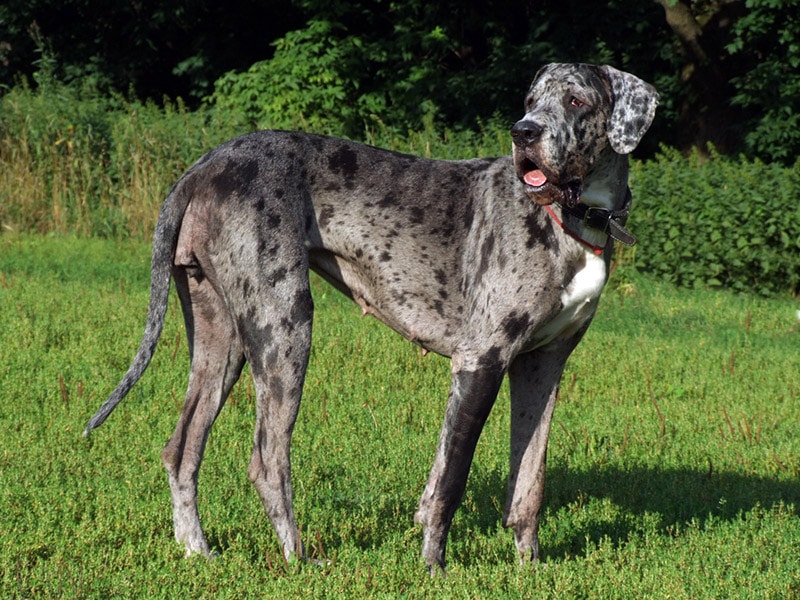
Exercise
Like males, females should also get at least one hour of daily exercise. This is important for physical and mental health. Great Danes aren’t super energetic, but they do have a good amount of energy that needs to have an outlet.
Training
It’s typically noted that female Great Danes are a bit easier to train than their male counterparts. This is largely due to faster maturity and that females are typically more emotionally in tune with the needs of their owners. Training should begin early and be based on positive reinforcement and reward-based training strategies.
Females should also be socialized from a young age and exposed to a wide variety of people, circumstances, and other animals. Always practice proper introductions when introducing anyone new. Having a firm leader that is consistent and confident is important for shaping her into a well-adjusted dog.
Grooming and Care
Grooming and care needs for male and female Great Danes are the same. Both sexes have the same coat, body type, and dietary needs. Smaller females may be a bit less expensive to feed than the largest of males just because of body size. That would be determined based on the particular food you are feeding your Dane and the specific guidelines.
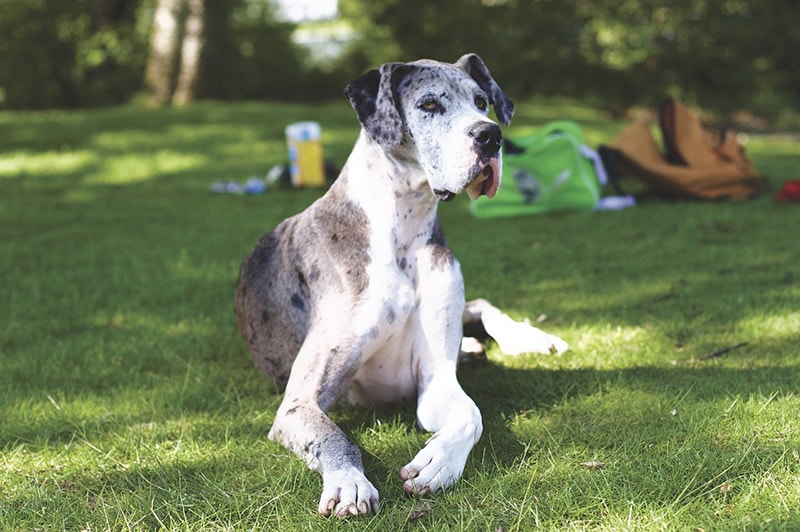
Health
It’s highly recommended that you have your female Great Dane spayed as soon as she reaches an appropriate age. The health and behavioral benefits are outstanding, so be sure to discuss this with your veterinarian. Females will cost more to have spayed because it’s a more complex surgery.
When it comes to lifespan and predisposition to health conditions, females and males do not differ. Here’s a recap of the genetic health conditions associated with the breed:
Suitable for:
Male and female Great Danes are typically well-suited for the same type of environment. They make excellent family dogs, especially in homes with older children that can more easily handle their size. They are also great for individuals looking for a social, loving, and loyal companion that is just a bit smaller than your average horse.
5 Facts You Should Know About Great Danes
1. Great Danes Are the Tallest Dogs in the World
It’s no secret that Great Danes are incredibly tall, after all, it’s their most obvious feature. These dogs reach up to 32 inches at the shoulder and will tower over most people when standing on their hind legs. They even captured the Guinness Book of World Records for the Tallest Dog in the World. A male Dane named Zeus reached a whopping 3 feet 5.18 inches, standing over 7 feet tall on his hind legs.
2. They Originated in Germany
The Great Dane was developed in Germany and was originally used to hunt wild boar and deer. They were also used as guard dogs for German noblemen and are dated back to the 17th century. Their looks have changed drastically over the years though, and their size has increased.
3. Their Lifespans Are Depressingly Short
The worst part about the breed is that they have one of the shortest lifespans among all dog breeds. Great Danes are only expected to live an average of 7 to 10 years. While it’s way too short for anyone’s comfort, those years are sure to be full of love and devotion, making it well worth it.
4. Vigorous Exercise Should Be Avoided Until 2 Years of Age
The larger the dog, the slower they grow, though it may not seem that way. The Great Dane will gain size seemingly overnight as they are growing puppies, but it takes them quite a bit of time to reach adult size.
Because of their predisposition to bone and joint issues, it is not recommended that they participate in vigorous exercise like jogging, running, jumping, and any hardcore canine sports until their bones are fully developed. This is to ensure they grow properly and minimizes the risk of health problems in the future.
5. They Are Expensive to Keep
The bigger the dog, the bigger the bills, which is why Great Danes are far from being considered cheap. Not only are they much more expensive to feed than smaller dogs, but their veterinary bills are also more expensive, and their large size makes them predisposed to more medical conditions than usual.
As for the home, you will have to buy larger everything when it comes to dog supplies. They can also put some serious wear and tear on furniture with their equivalent to human weight ranges. Expect to have objects knocked off of surfaces with those massive tails, too.
Is a Male or Female Great Dane Right for You?
There are some slight differences between male and female Great Danes. Males tend to get larger and may display more territorial instincts when it comes to protecting the home and family. They are typically more goofy, clumsy, and maybe a bit slower to pick up on training than females.
Females are typically very nurturing and calm and because they are quicker to mature, they are generally easier to train. They also have a bit more self-awareness and emotional awareness concerning the people around them.
It’s important to note that each dog is an individual and personality and traits will vary. Only you can decide which Dane will be best suited for you and your family. Just be prepared for all that Great Dane ownership entails and make sure to find yourself a reputable breeder so that you can bring home the healthiest puppy possible.
Featured Image Credit: (L) Pavel Shlykov, Shutterstock | (R) Tara Lynn and Co, Shutterstock

